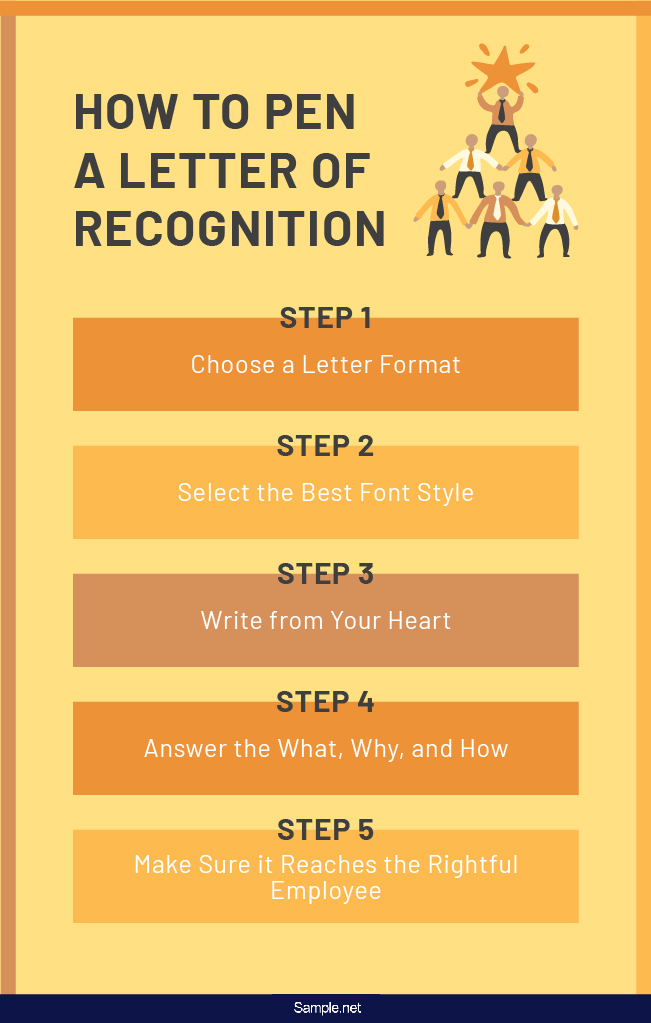24+ Sample Recognition Letters
-

Employee Recognition Letter Template
download now -
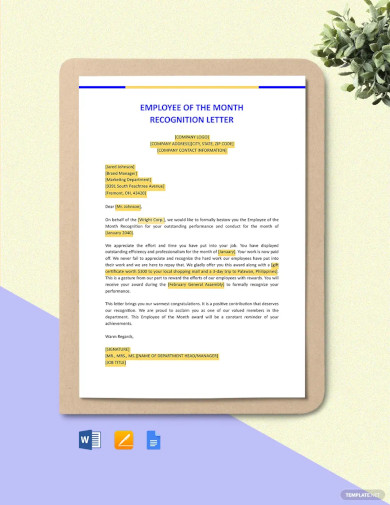
Employee of the Month Recognition Letter Template
download now -
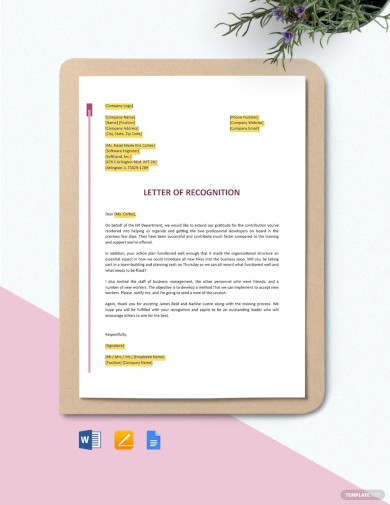
Employee Recognition Award Letter Template
download now -
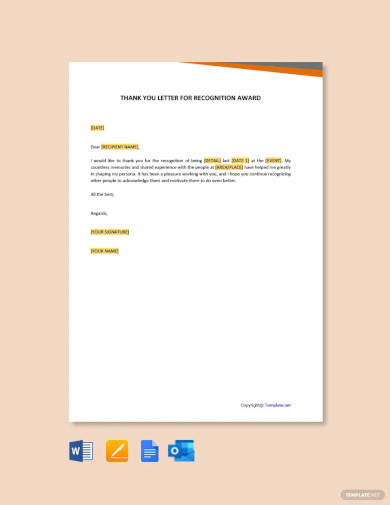
Thank You Letter For Recognition Award Template
download now -

Simple Employee Recognition Letter Template
download now -

Work Recognition Appreciation Letter Sample
download now -
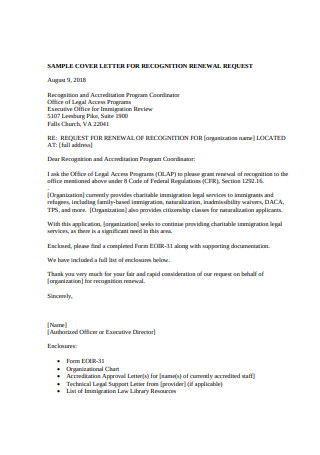
Sample Recognition Hard Work Cover Letter
download now -

Award Performance Recognition Letter
download now -
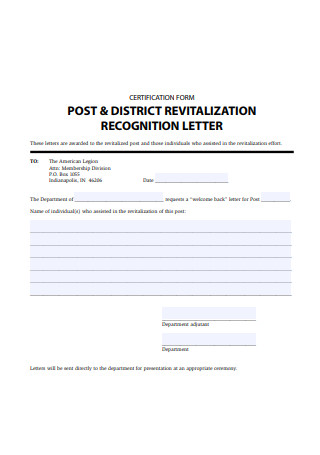
Recognition Outstanding Performance Letter Format
download now -
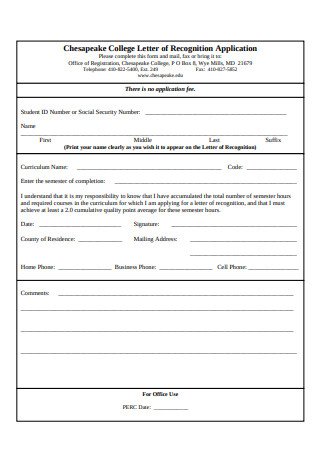
Recognition Job Well Done Letter
download now -
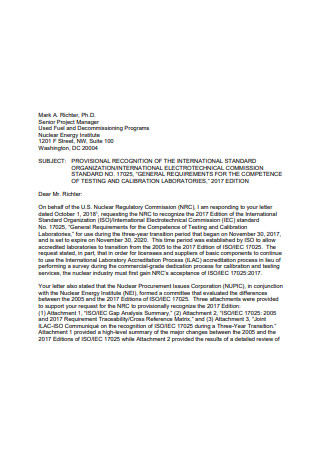
Recognition Service Letter Example
download now -
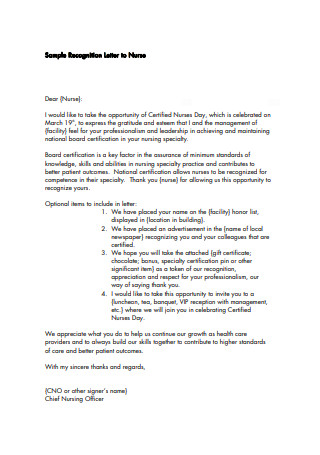
Sample Recognition Team Letter to Nurse
download now -
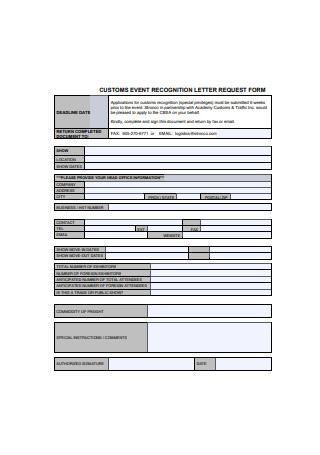
Event Recognition Customer Service Letter Request Form
download now -
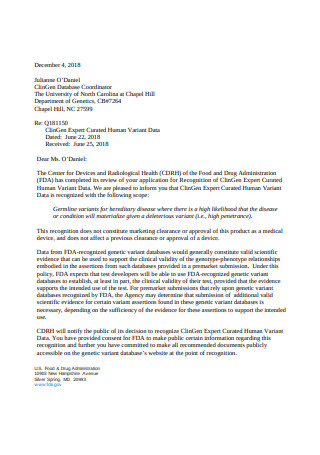
Recognition Supervisor Decision Letter
download now -
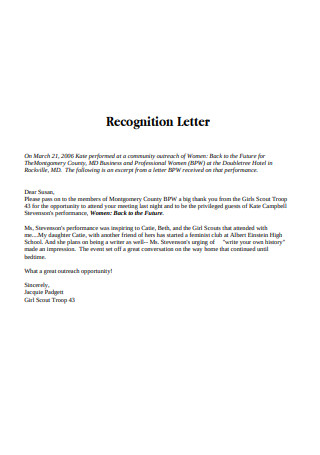
Basic Business Recognition Letter
download now -
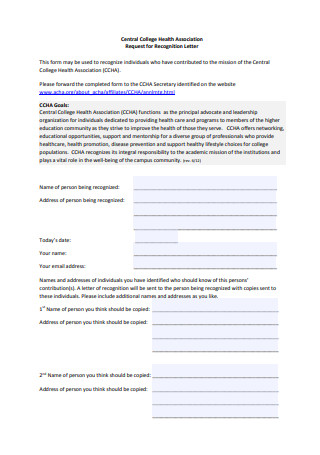
Request for Recognition Leader Letter
download now -
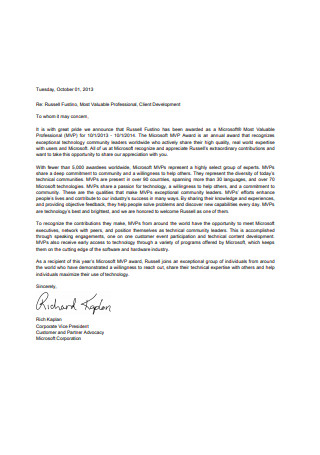
Executive Volunteer Recognition Letter
download now -
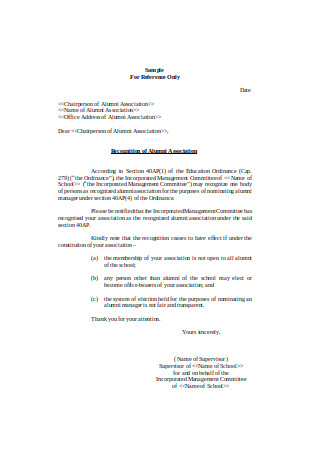
Sample Gratitude Recognition Letter Format
download now -
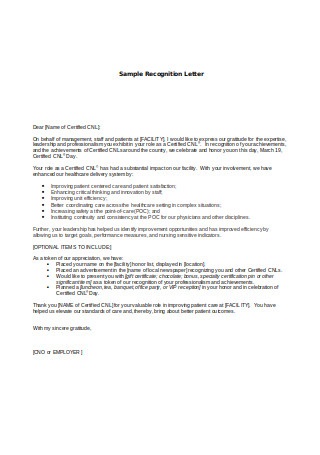
Sample Teacher Recognition Letter Example
download now -

Basic Academic Recognition Letter Format
download now -
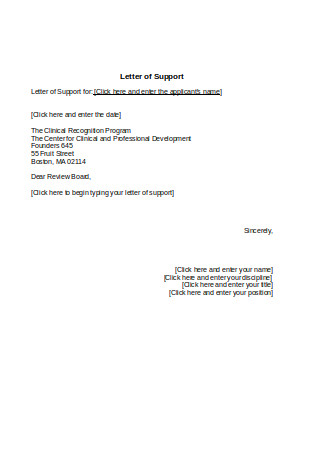
Clinical Recognition Program Letter Sample
download now -
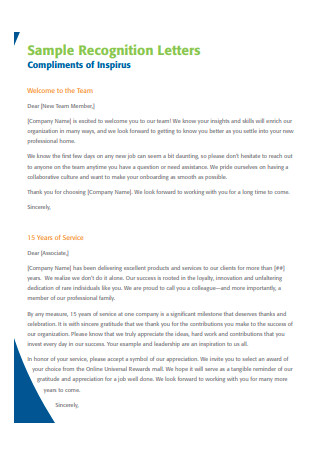
Sample College Recognition Letter
download now -
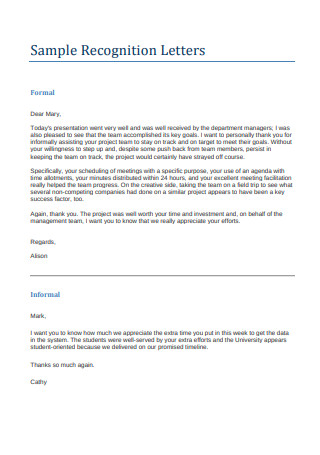
Recognition Congratulations Letter
download now -
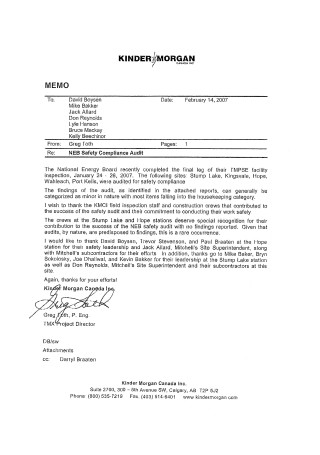
Safety Recognition Certificate Letter
download now -
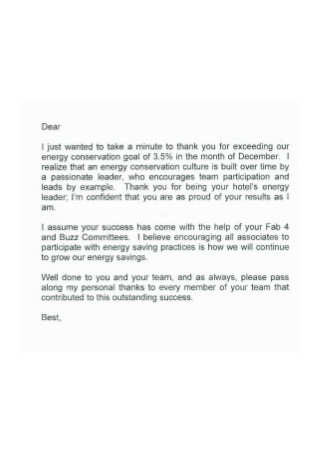
Printable Staff Recognition Letter
download now
FREE Recognition Letter s to Download
24+ Sample Recognition Letters
What Is a Recognition Letter?
The Value of Recognition
Lines of a Letter
How to Pen a Letter of Recognition
What Is a Recognition Letter?
Before social media platforms came into existence, ink and paper had always been a man’s instrument in expressing their thoughts, feelings, or opinions to a person beyond their reach. When distance won’t permit them to communicate with each other personally, people from the past would grab a pen and paper and write a letter. Then the brightest minds opened new doors for innovations as time passed by. The invention of the telephone during the 1800s paved the way for an easier form of communication between individuals. Thus, somehow eliminating the need for people to write letters. Subsequently, other communication media were introduced up until today. Nevertheless, some people still opt to send handwritten or printed letters, even with the availability of online applications. As featured in the United States Postal Service’s website, there are over 180 million pieces of first-class mail processed and delivered by USPS every day. This includes postcards, small packages, and letters.
Whether it is for business or personal purposes, people of today have not yet scrapped the idea of writing letters. And although we have varied reasons to write a letter, our common goal is to convey a message to another individual. One of the many examples of a letter is a recognition letter. Employers send this type of letter to their employees to show appreciation and express their gratitude for being exceptional workers in their company. Moreover, it conveys to the employees the type of behavior the higher-ups would like them to maintain. It can be in the form of an email or a handwritten note or card.

The Value of Recognition
Nobel prize winners or Nobel laureates are people recognized for their works because of its great benefit to mankind. These individuals have the greatest minds in the field of physics, chemistry, medicine, literature, economics, and the promotion of peace. The United States of America clinched the highest number of Nobel Prize awardees—with a total of 336 winners. A grandiose awarding ceremony is not the only way to recognize people who have put their efforts and hearts into everything they do, though. In a company setting, giving recognition letters (and bonuses, maybe) to the employees would be an excellent way to acknowledge talents and exemplary performances. It is essential to recognize their efforts due to these reasons:
Lines of a Letter
Just like a song without a word, a letter without a line will turn out senseless. We all know that a piece of formal writing is incomplete in the absence of one of its components. Haven’t wrote a letter for years already? Worry not! In this section, we have outlined the basic elements of a recognition letter so you can add a little bit more of information on the things you already know about letter-writing.
Heading Information
One of the most crucial components of a formal letter is heading. For a recognition letter, this section typically includes the name of the sender or the employer, position, company name, company address, and postal code. Collectively, we refer to these details as the return address. However, it would not be necessary for you to include this information in your letter when you make use of letterheads in sending out recognition letters. As the name suggests, a letterhead is a sheet of paper printed with vital information and other design elements at its top portion. The heading includes the name of a company, address, contact details, and logo. With these details already reflected on the sheet, this would eliminate the need for you to indicate the return address before writing the date.
Address of the Recipient
After specifying the date in your document, leave a single line blank then type in the necessary information about the recipient. This includes the name of the employee, their address, and postal code. In writing these details, make sure that it is correct and complete so that it will reach the destined recipient. Moreover, if you know that the employee has a title attached in his or her name, don’t forget to include it. Then, skip a line for the salutation or greeting.
Salutation
Opening remarks or salutations are a staple to every message—be it a speech, a simple text message, or a letter. Whether you are sending letters through snail mail or electronic mail, starting your message with a salutation is an excellent way to express courtesy to the person reading the material. Aside from that, it also helps you address or greet the recipient properly. Most of the time, the usual salutation letter senders make use of is “Dear Mr./Ms. (name of recipient)”. Moreover, you should avoid using general salutations like “To Whom It May Concern,” given that you are addressing the letter to a specific employee alone.
Purpose of the Letter
When employees receive a letter or an email from their employers, they would not know how to feel. Would they be happy or alarmed? Clearly, being in this emotional state is not a good thing. Which is why you have to be direct to the point and state the purpose of the letter in the first paragraph. Let your employees know that you are grateful for their invaluable contributions to the company. In the main content of the letter, delve into the importance of your worker’s efforts and in what instances did it helped in the development of the organization. In addition to that, you can also commend them for their right conduct while inside the workplace.
Re-stating of Your Appreciation
Before ending your message, it would be of great help to reiterate your gratitude to your employees. This element is important in a recognition letter because it will strengthen the context of your document. Furthermore, it assures the recipient that you genuinely recognize their performance. Here, you can also convey to your employee your expectations for the future or encourage him or her to set the right path for others to follow. Expressing the behavior and performance you want to witness gives them more motivation to keep up the good work.
Complimentary Close
If letters have salutations, it should also include a complimentary close or complimentary closing. A formal or informal letter without a complimentary close is barely a letter at all. As you probably know, a complimentary close (sometimes referred to as valediction) is an expression or term that precedes the writer’s signature. This signoff word or phrase is an indication of the end of a message or letter. Without it, your writing might appear informal or unprofessional. Common examples of complimentary close include very truly yours, yours truly, respectfully, sincerely yours, sincerely, best regards, and with thanks.
Signature
Original artworks, paintings, contracts, agreements, and letters may have nothing in common, but they usually include one thing—signatures. Signatures prove the authenticity of a work of art or a document. Regardless of the type of letter, you are writing, you need to affix your signature at the end of your document. If you prefer to send a hardcopy of the letter to your employees, leave at least four lines blank between the complimentary close and your printed name so you will have enough space to sign the document after printing it out. On the other hand, you only need to leave one space if you opt to email the letter to your employees.
How to Pen a Letter of Recognition
Although some people claimed that handwritten letters never go out of style, we could never turn down the ease technology has brought us. The invention of electronic mail during the 1900s gives individuals and professionals all over the world the chance to communicate with each other without having to travel as far. Throughout the years, the development of technology provided people faster means to reach out to each other. With over 1.5 billion active users since its launching last April 1, 2004, Gmail is deemed as the most popular and commonly used email service around the globe. Whether you want to send a hard copy of the recognition letter to your outstanding employees or just email them, here are five steps you can follow to guide you in creating a personalized recognition letter for our employees.
Step 1: Choose a Letter Format
Before you start writing the recognition letter, you first need to choose the formatting style you will follow. Note that there are several types of styles you can make use of in writing a formal letter. This includes the block, modified block, and semi-block style. In a block format, the entire content of the letter—from the heading to the complimentary closing—is aligned to the left with no indentation. On the other hand, a modified block format is somehow the same as the block format. However, the return address, date, and complimentary closing begin at the center of the page. Lastly, the semi-block format is a little informal. In this style, the paragraphs have indentions. Bear in mind that a single type of letter follows no identical format. Therefore, it is for you to decide which one you will make use of.
Step 2: Select the Best Font Style
The primary purpose of a letter is to convey a message through writing. To communicate your message clearly, you need to make sure that the content is legible enough in both digital and print media. Keep in mind that you are writing a formal letter to your employees, so making use of a decorative font style won’t be a good choice. We suggest that you limit your selection to one basic serif or sans serif typeface.
Step 3: Write from Your Heart
Your letter should convey emotions that come along with the message you wrote. One way to achieve this is to be genuine and to write from your heart. However, this does not mean that you have to write blocks and blocks of sentences for the recipient to feel your sincerity. A few yet perfectly chosen words will do. Just make sure that through the recognition letter, the employee will understand how their talents and accomplishments created a huge and positive impact in your organization. Furthermore, you should prevent writing the same phrases and wordings for different recipients. You need to connect to the recipient on an emotional level, and writing a letter that’s specifically tailored for them is the key to that.
Step 4: Answer the What, Why, and How
We don’t need to talk about the other components you should write in the recognition letter since we’ve already covered the topic beforehand. Hence, we will only focus on the body of the material. For its main content, specify what are the things the employees have done that are deemed worthy of recognition. Then, discuss why is it beneficial in the organization and in what way or how did it help foster the development of the company.
Step 5: Make Sure it Reaches the Rightful Employee
After writing the recognition letter, proofread its content, and make sure that it is free from any type of error. Then print it out or send it digitally to the employees—whichever method you prefer. Lastly, make sure that it reaches the recipient or else your efforts would go to waste and the document will lose its purpose.
